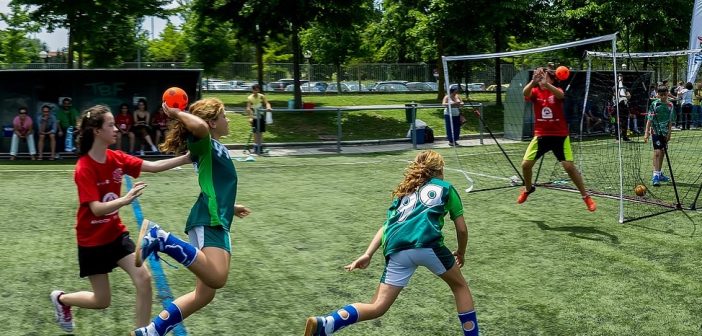There are well documented and indisputable benefits for children’s participation in extra-curricular activities, particularly physical pursuits. As well as improving fitness, motor skills and general wellbeing, participation in structured activities outside of school also benefits children socially and emotionally, giving them an opportunity to build friendships through shared interests and develop their self confidence.
The government’s AusPlay survey results released in 2016, showed that the top 5 sports for boys up to 14years were swimming, soccer, AFL, cricket and basketball. For girls the top 5 were swimming, netball, dancing, gymnastics and soccer. Other sports listed for both genders included tennis, hockey, other codes of football, and marital arts.
None of these results are overly surprising, with popular kids’ sports easily identifiable on fields and ovals around the country every weekend. These popular sports also have clubs that are highly visible through advertising.
But what if your child isn’t into any of these higher profile activities? They may not be into team activities or interesting in ball sports. Trying to find something that sparks your child’s interest can be challenging but that are plenty of other options out there.
Here are some alternatives that might appeal:
A sport where two opponents duel with swords may not sound like a great option for kids but there are a lot of reported developmental benefits to fencing. Children will develop stamina, strength and body awareness as they learn to move to defend and attack. Described as “physical chess” they will learn strategy and critical thinking skills to outwit their opponent. It also helps with disciple and self confidence. As they are properly kitted out with protective clothing and masks, the risk is minimal. Fencing is recommended for children 7+ and some schools offer fencing as a sport. Costs will include personal equipment.
With the popularity of geo-caching, orienteering is a great pursuit for kids who like to explore. As well as teaching them navigational and map reading skills, orienteering builds physical stamina and is a great way to get kids outdoors. It is a sport that can be done individually or in groups and can even be done on mountain bikes. Orienteering is also an activity the whole family can get involved in and doesn’t have expensive equipment costs.

Great for developing concentration and focus, archery is a fairly simple but disciplined sport. With the obvious aim of hitting targets using a bow and arrow, archery doesn’t require a lot of movement but does build upper body strength. Learning about safety and practicing patience are also key elements of this sport. Suitable for ages 8+, most clubs will allow you to hire equipment.
More than just a fun activity, ice skating is great exercise as it develops core strength as well as improving posture and balance. After mastering the fundamentals of skating your child can graduate to figure skating, speed skating or even ice hockey. Ice skating lessons are fairly reasonable in price and you can hire skates. Skate schools are suitable for ages 3+
Of course these are just a few of the alternatives to popular sports your child could choose from. You could also look at:
- Skateboarding
- BMX
- Ballroom dancing
- Nippers (junior lifesaving)
- Musical theatre
- Acrobatics
- Trampolining
- Hula Hooping
The list is endless.
Obviously its all about finding something that your child enjoys so they become actively engaged and get the most out of the activity. Chat to them about what they like to do and think about what areas of development they would benefit most from. Most clubs offer trials or even have open days where you can see what it’s all about. If your child is reluctant, try not to push too hard. They are more likely to begrudge an activity if it is thrust upon them. Here’s a great story about letting your child find their “thing” in their own time.

